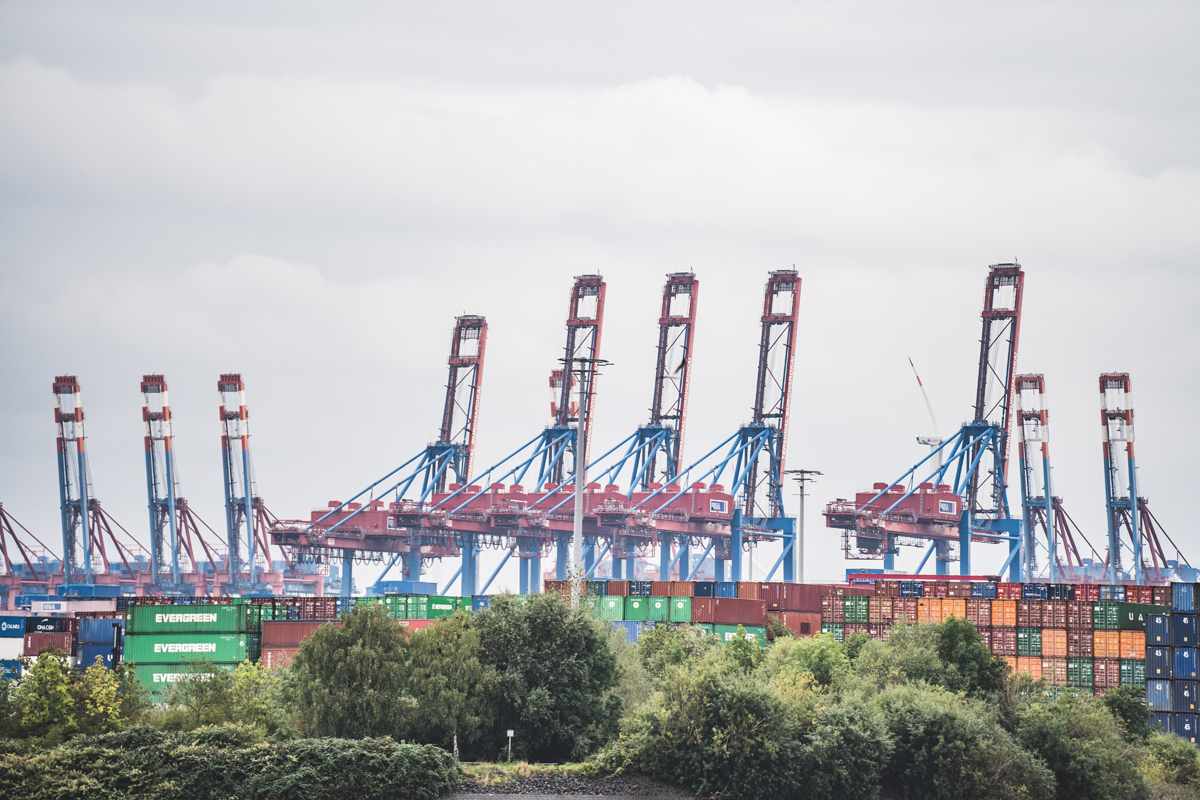Everything Is Connected: What Led Us To The Supply Chain Crisis

The supply chain crisis came about in the confluence of numerous factors, all of which have resulted in long lead times, snarled ports, and rising prices and shipping costs. Last week, Lawrence, Massachusetts-based supplier Gemline (PPAI 113948, S11) held a free webinar on how the current supply chain situation unfolded and how to better prepare for any potential future disruptions.
Gemline CEO Jonathan Isaacson was joined in the webinar, “Global Supply Chains: How We Got Here and What’s Next,”by Willy Shih, the Robert & Jane Cizik Professor of Management Practice in Business Administration at Harvard Business School (HBS) professor and a recognized supply chain expert. Shih has been a member of the HBS faculty for more than 15 years, and prior to that, spent 28 years in industry working for companies including IBM and Silicon Graphics. He is a regular contributor to Forbes, The Hill, the Wall Street Journal and other media outlets on supply chain-related topics.
Modern, global supply chains are multi-faceted, many-stepped processes. For many product sectors, when an item leaves the factory, it represents the culmination of work not only at that factory, but also that of various component suppliers. And potentially, the work of suppliers to suppliers. In some industries, like automotive, these tiers can go quite deep. Shih notes that while this can bring benefits in terms of the division of labor, and handling the specialization necessary to produce increasingly complex products, there are downsides as well.
“The dirty little secret,” Shih says, “is most manufacturers don’t know who their third-tier manufacturers are. They’ll know who their first tier is—who sometimes don’t want you to know who their own suppliers, the second- and third-tier, are, for competitive reasons—but to figure out everyone in the supply chain can be a very complicated and expensive task. So, a lot of people don’t do it. However, some companies with resources, like Apple, go way, way down.”
These long supply chains are vulnerable to various disruptions. The Ever Given obstructing the Suez Canal, Texas’ power grid succumbing to the freeze last February and a fire in October 2020 at a major Japanese semiconductor fab are all examples Shih gave of recent disruptors. The effect of variability is exacerbated as supply chains extend further and further. He says, “If you have variability in one of those steps, it gets much worse as it gets longer and longer and longer.”
The supply chain is also wrestling with cross-sector impacts. Factories serving numerous product categories idled or cut production early in the pandemic, but as demand rocketed back up, they’re scrambling for limited component parts.
One higher profile example of this competition is the auto industry and its difficulties securing the microprocessors modern automobiles need. Go down a few tiers in the supply chain and auto manufacturers are sourcing chips from the same suppliers as numerous other product categories. And all of them are dealing with surging consumer demand.
Compounding the impacts of variability and disruptions in manufacturing are shifting demand patterns and cargo carrier network strategies. Shih says, “Typically, peak season starts in August and tails off at the beginning of December. We have been in a peak season since August 2020. Only now has traffic been letting up. We’ve had a buying binge that has sucked traffic from other sources.”
As an example of the supply chain timeline and complexity, Shih traced the path a TV takes to reach a retailer in Chicago. Starting at the TCL Factory in Shenzhen, China, which produced televisions for numerous brands, it's placed into a shipping container and trucked to the port in Yantian. The container is transferred to the yard before being loaded onto a ship. The ship sails to the Port of Los Angeles or Long Beach, and the container is unloaded and placed in that port’s yard. It’s then transferred onto a train to Chicago, where it’s unloaded into another yard. From there the container is taken to a distribution center, where its unloaded and the TV is finally transported to the retailer. Ultimately, it can be an 80-90-day process.
Building out the system can only go so far in improving the current situation, Shih says. Trans-Pacific capacity has been expanding. The overall global fleet capacity grew by 1.3 million TEUs in 2021, a massive 31.2% increase. There has also been a shift of capacity from other trade lanes. And while capacity increases exceeded demand growth, all of it was used up compensating for efficiency losses—namely, ships waiting at both ends to take-on or off-load cargo.
The backlog of container ships waiting to offload their cargo at the Ports of Los Angeles and Long Beach is receding. In early February, it was 78, down from 109 one month earlier. While the lowest level since November, it’s remains historically extremely high, and port authorities aren’t declaring the backlog crisis over, as it may be due to factory slowdowns in Asia during Lunar New Year celebrations.
The price of shipping has increased significantly during the supply chain crisis, but Shih expects it to improve in time as there is considerable container capacity under development. Continued supply-demand imbalances take time to work out. Shih also noted that China’s zero-tolerance policy on COVID-19 can also complicate the recovery, as well as the European Union’s carbon border adjustments, which could lead to some long-term shifts, and the International Longshore and Warehouse Union (ILWU) contract renewal negotiations.
Shih says, “When’s it going to get better? It’s not going to be a lightswitch. Different sectors and supply chains will recover at different speeds.”

